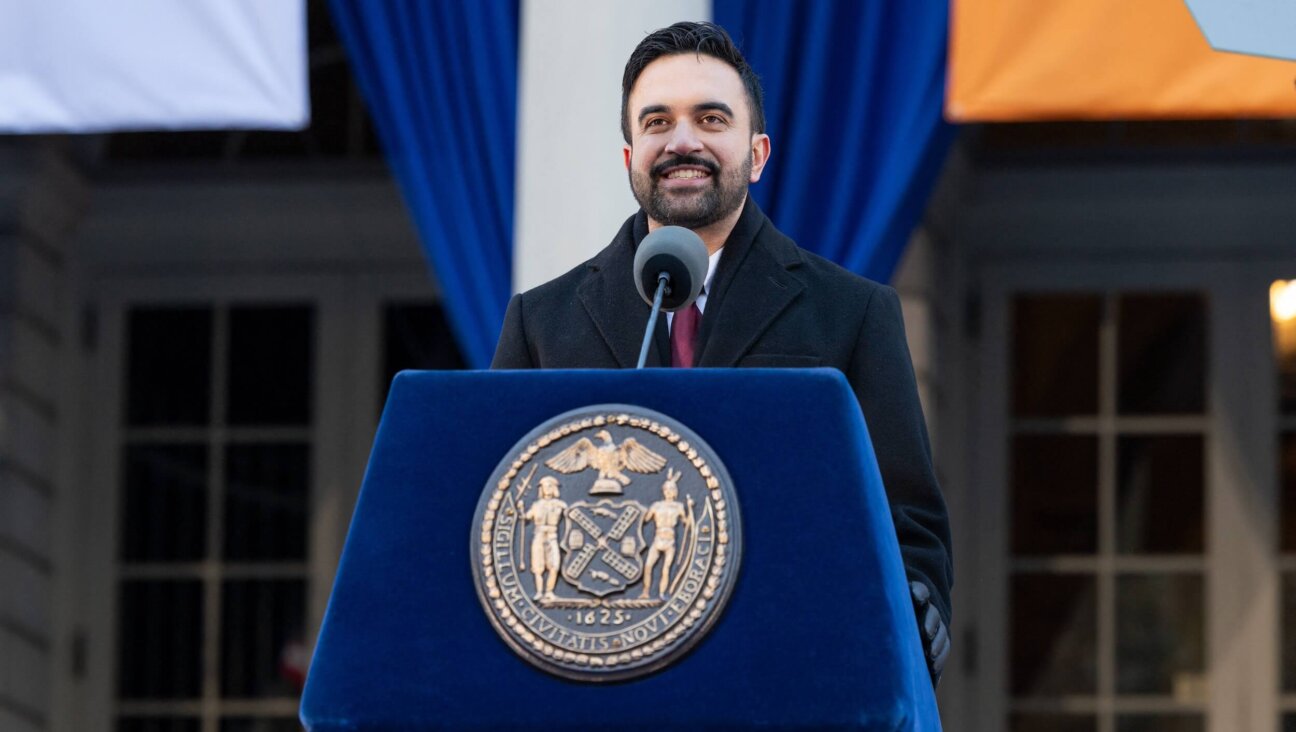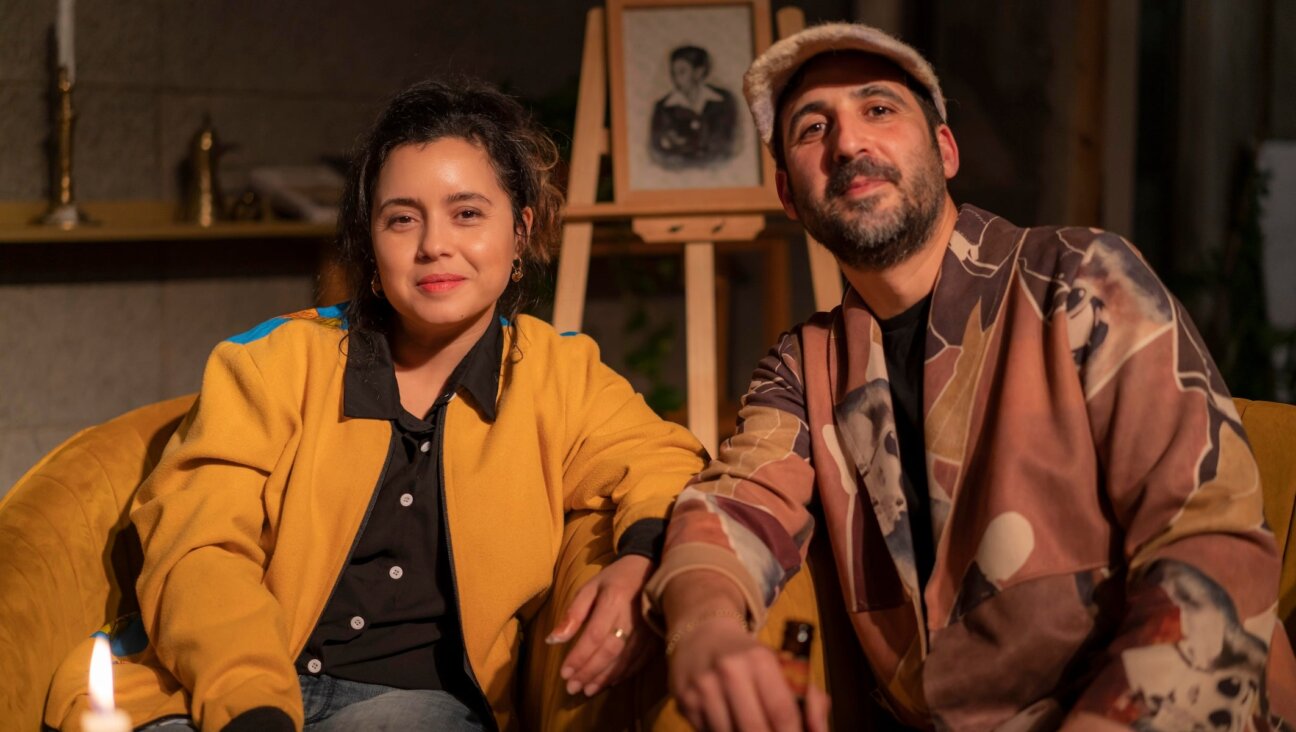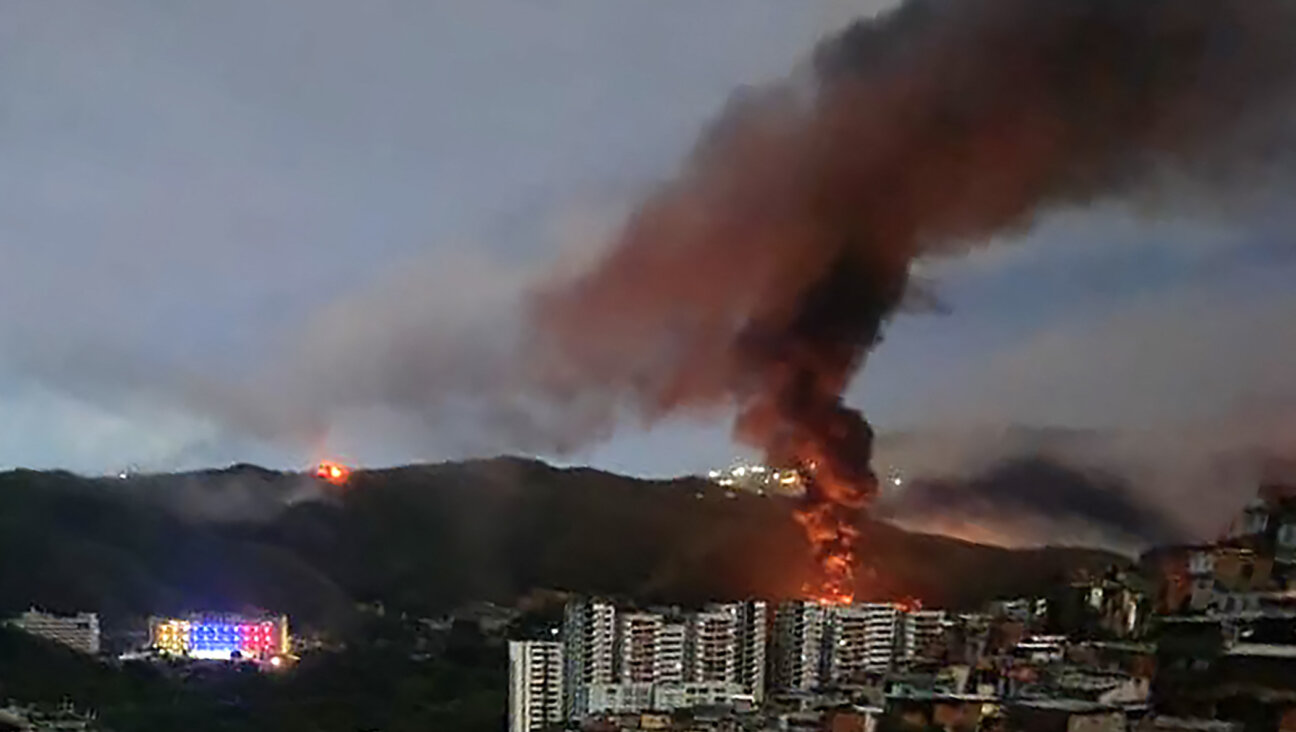Is Hasidic Board To Blame for Gutting Public Schools in N.Y. Town?

Interest Conflict: Jewish members of the majority on the East Ramapo school board have presided over deep cuts in public schools, as most children in their community attend private yeshivahs. Image by getty images
The First Baptist Church is on a dead-end street in Spring Valley, N.Y., hard up against the railroad line that peters out a few blocks north. Adam Baldachin, a 30-year-old Conservative rabbi, stood at a podium under a fluorescent light in the church basement, backed by two-dozen religious leaders including black pastors in collars and women rabbis in yarmulkes, crosses pinned to lapels. They were there with a new solution to a crisis of democracy that has engulfed this upstate community.
“This system of governance of our public schools is unacceptable,” Baldachin declared at the April 8 meeting, addressing the 80 or so locals and journalists who filled the basement room and spilled out into the hall. “Today we stand for justice.”
The struggle over the East Ramapo Central School District in this poor suburb 40 minutes north of Manhattan has grown familiar after four years of press coverage: Ultra-Orthodox Jews who don’t send their kids to the public schools control the majority of seats on the local school board. And the families who do send their kids to the public schools say the board members favor the private yeshivas in the district at the expense of the public schools.
The years of media attention have changed little. The East Ramapo district is getting worse. Elementary schools don’t have assistant principals anymore. They don’t have art classes or social workers, either. Middle school sports have been cut, as has summer school. Class size is up to 28 students in some elementary school buildings. Parents who can send their children elsewhere, do.
In the church basement in Spring Valley, local activists were launching a new strategy: targeting the governance structure that gives control over the schools to people who have little stake in the schools’ quality, rather than merely attacking the school board’s leadership. That structure must change if public school children are to get their fair share, the clergy leaders said.
Yet the clergy members’ analysis isn’t the only explanation on offer for the piteous state of the district’s public schools. School administrators say that this is not a case of one side favoring their own over the interests of the public. Rather, they say, it’s the state that is starving the system, setting each side against the other.
Recent statewide education cuts have disproportionately hurt East Ramapo and other poor districts, according to East Ramapo’s superintendent, who argues that Governor Andrew Cuomo’s funding policies are gougin poor school districts in general. That’s not the fault of East Ramapo’s ultra-Orthodox school board, he says.
What’s clear is that a few thousand poor black and Hispanic students have been shunted into a neglected school district dominated by a booming ultra-Orthodox population, and that the two groups are being left to fight over scant resources. What isn’t clear is whether there’s any way to fix the problem.
Baldachin has had a pulpit in Rockland County for only nine months. A recent graduate of the Jewish Theological Seminary, he hadn’t heard about the East Ramapo fight before a local journalist asked his opinion on it not long after he became the rabbi of Montebello Jewish Center. He didn’t know what the reporter was talking about, so he asked congregants, who filled him in.
Baldachin doesn’t look much older than the high school kids whose cause he has taken up. Over the past few months, he has been meeting regularly with Oscar Cohen, the 72-year-old former school administrator turned local activist with the National Association for the Advancement of Colored People. Cohen has led the local activists in their effort against the school board.
When Cohen addressed the crowd at the First Baptist Church meeting April 8, his white hair and gray blazer stood out among the younger, dark-suited spiritual leaders. Cohen and other local activists have agitated for years against the ultra-Orthodox board members without making much progress. They tried voting out the board, but the Orthodox bloc won every time. They tried complaining to the press, but the stories came and went, and nothing happened. They tried going to lawyers and prosecutors and politicians, but the law is slow.
“We weren’t getting much traction from the politicians, other than the local politicians,” Cohen told the Forward. Cohen said that he speaks regularly with officials in the governor’s administration, who tell him that the governor’s ability to intervene is limited. Cohen doesn’t believe them. “I can’t imagine this happening in Nyack or Clarkstown or Pearl River,” he said, listing nearby wealthy districts.
Clergy speaking from the podium at the First Baptist Church event were careful not to lay blame for the bad state of the district on the ultra-Orthodox school board. “East Ramapo public school governance is broken, and we need Governor Cuomo to address this tragedy immediately,” said Joel Michel, pastor of the French Speaking Baptist Church of Spring Valley, a tall man with a knack for biblical quotation. When an audience member asked why the clergy were only now organizing around the public schools, Michel stepped again to the microphone: “There is a time for everything under the sun,” Michel said. “A time to remain quiet and a time to speak up. This is the time right now.” The room erupted.
But beyond the energy the members bring, it’s not clear if the clergy has any actual ideas on how to change things.
In a petition to Andrew Cuomo, the group set forth two demands: Initiate state oversight of the school district, and figure out a way to change how the district is governed.
But ask the clergy what they mean by the second point, and they can’t answer.
“It really is developing a model that may not exist in New York State, may not exist in the United States,” Cohen said. He wants the governor to set up a task force, invite in management consultants and policy experts, and figure out a different way to run the district and other districts that face similar problems.
Today, there are 8,100 public school students in East Ramapo and close to 20,000 students in non-public schools within the district. The only similar district in New York State is the Lawrence Union Free School District in Long Island, where the large Orthodox community of the Five Towns has also come into conflict with local public school parents.
At the podium, Cohen offered one possible policy fix for East Ramapo: Merge all eight of the school districts in Rockland County into one big school district, in which the disproportionate power of the ultra-Orthodox voting bloc in school board elections would be diluted.
It’s an interesting idea, but not even Cohen himself thinks it could actually happen.
New York State has 695 school districts; Florida, with a similar population size, has just 74, roughly one for each county. “We are running on the vestiges of a colonial system,” said Dana Goldstein, an education policy writer and author of the forthcoming book “The Teacher Wars: A History of America’s Most Embattled Profession.” New York’s small districts are a relic of the earliest days of public education, when each town was split up into a handful of tiny districts. Today, these small districts are particularly popular in New York’s suburbs, where affluent towns and villages are able to school their children separately from those of neighboring poor towns.
“It’s a bipartisan issue” with the middle class suburban electorate, Goldstein said, referring to the tiny school districts. “It’s affluent and influential people who want this.”
Under current state law, the residents of all the districts involved in a merger would need to vote on and approve the change. And that’s next to impossible, given the politics of New York State.
“There’s a reason why low-income kids exist in places where there’s a big Orthodox community,” Goldstein said. “These are not the places where the affluent white people are choosing to live, and they like it that way.”
Pressed for other ideas, Cohen and the clergy came up dry. “It’s hard for me to believe that there is no solution to a problem,” Cohen said. “That’s what people do, they solve problems.”
Ask the superintendent of the East Ramapo schools about what’s gone wrong in the district and he, too, will point to structural flaws. But his analysis looks nothing like that of the clergy or of Cohen.
Joel Klein has been the district’s superintendent since the board removed his predecessor, Ira Oustatcher, in 2011. In Klein’s telling, the district’s woes stem not from the depredations of Orthodox board members, but from state funding formulae and budget cuts that have hurt East Ramapo more than other districts.
Klein says that East Ramapo has lost $45 million in state aid over the past four years through the Gap Elimination Adjustment, a measure passed in 2010 by then-Governor David Paterson in 2010 to help close the state’s budget deficit. That’s more than most other districts in the region.
Klein said that the GEA had hit poor districts like his particularly hard. Because of their own poor local tax bases, the districts rely more heavily on state funding, and so they lost more when the state cuts hit.
“We’re getting killed,” Klein said. “And we don’t have the political clout.”
He and Yehuda Weissmandl, the current school board president, also blamed the state’s funding formula for shortchanging East Ramapo. “There isn’t enough money, it’s that simple,” Weissmandl told the Forward.
Weissmandl said that the cuts to school programs have been painful but the district hasn’t had a choice. “The only way for us to balance the budget is to try to find ways to save money… and to cut programs, to cut jobs,” Weissmandl said. “These decisions don’t come lightly.”
Still, even if Klein and Weissmandl are correct, the activists can, perhaps, be forgiven for their suspicion of the board members.
In recent years, a series of episodes has raised questions about the Orthodox-dominated board’s concern for the public interest in its dealings with the Orthodox community. In 2010, the board closed and sold an elementary school to an Orthodox yeshiva at a sale price that was millions of dollars below market value. The real estate appraiser on whose appraisal the sale was based was later indicted, and the New York State Education Department annulled the sale.
The school board has also faced a range of administrative and legal challenges to its practice of using public funds to send Orthodox special needs children to Orthodox yeshivas rather than to public schools. Critics say that the district has spent too much on private special education placements, and the New York State Education Department has withheld state funding after determining that the district’s practices broke state and federal laws. The district sued the state education department over its finding, but has since lost two court decisions in the matter. It is appealing the latest decision.
Even fellow board members have condemned the Orthodox board majority’s stewardship of the district. Stephen Price, a board member for two decades who resigned in 2013 along with another non-Orthodox board member, said that the administration had declined to give him financial data and accused fellow board members of “intimidation.”
Yet it’s clear that these issues alone don’t account for the cuts to services at East Ramapo schools. A series of audits from the Office of the State Comptroller has not uncovered fraud at the district, and the New York State attorney general’s investigation has brought only a single indictment of the outside appraiser. Even if the ultra-Orthodox board members are treating the ultra-Orthodox better than the public school parents, it’s far from clear that kicking them out would fix the district’s problems.
Even under the best circumstances, East Ramapo’s schools would be having a tough time.
Between the 1960s and the ’70s, white families in the district were largely replaced by African-American and Haitian families. Today, Hispanic and Latino immigrants are replacing those communities. As of 2012, 37% of the students in the East Ramapo district were Hispanic, up from just 30% only two years earlier. A fifth of the district’s students have limited English proficiency, according to state data.
A significant proportion of the district’s parents are said to be undocumented immigrants who aren’t allowed to vote in local elections.
As services in the district have been cut, families with means have done what they can to pull their kids out. The proportion of East Ramapo students poor enough to qualify for the federally funded free lunch program jumped to 67% in 2012, from 50% in 2010.
People in the area, meanwhile, are getting angrier. From the back of the crowd at the First Baptist Church event, one woman stood up to say that the state had abandoned the district. “Ever since East Ramapo changed from mostly white to black, nobody cared about these children,” she said.
That might be the one point on which Cohen and Klein agree. Yet while Klein asks for patience, saying that he will be reinstating some of the slashed programs next year, Cohen is calling for a revolution in the state’s system of electing school boards that he himself can’t define.
“Blaming people’s motives or blaming the actions of one community toward another, I think, is not productive,” Cohen said. “The system is not working properly.”
Contact Josh Nathan-Kazis at [email protected] or on Twitter, @joshnathankazis















